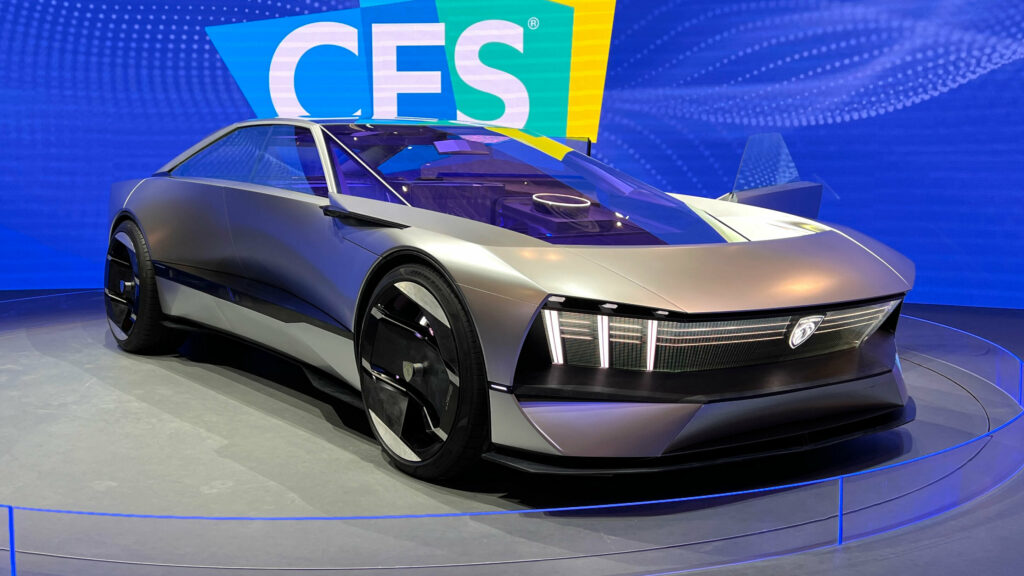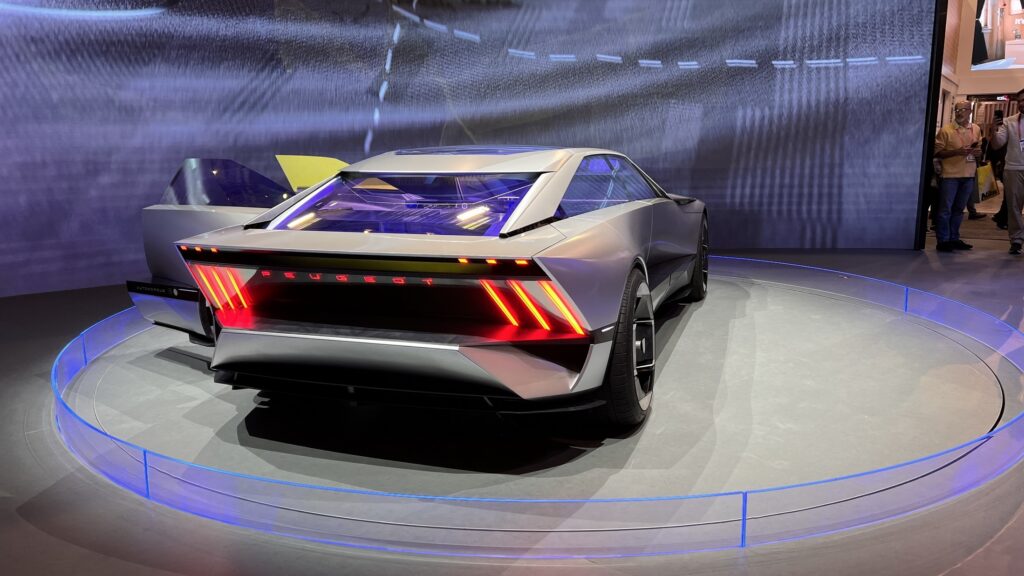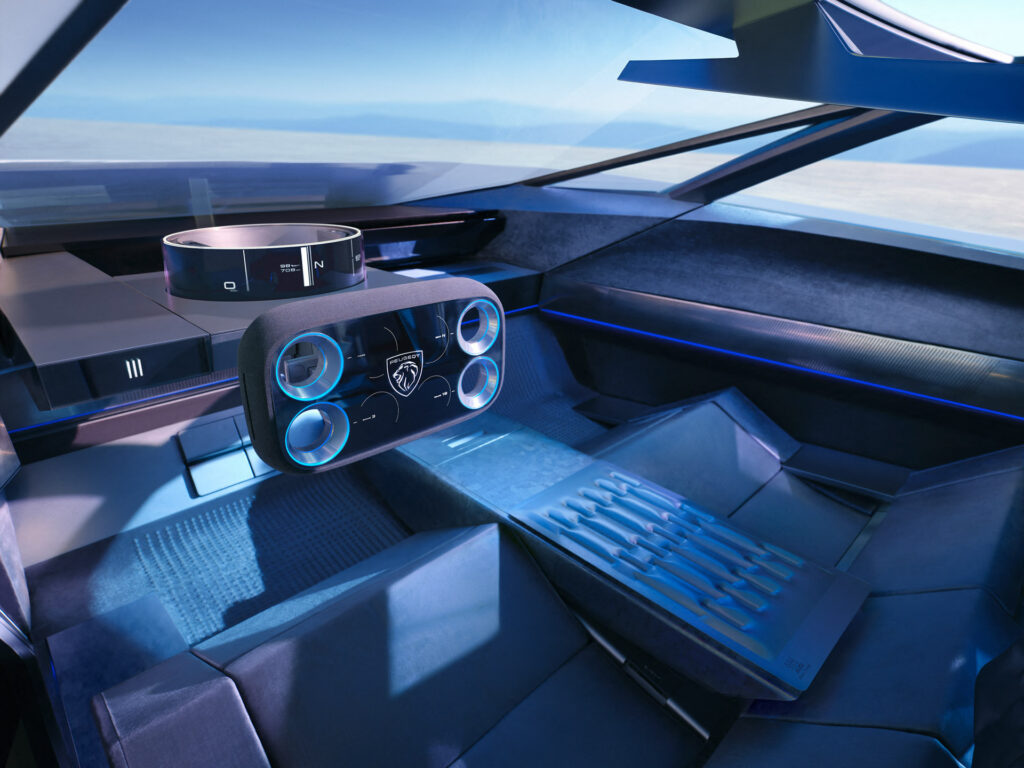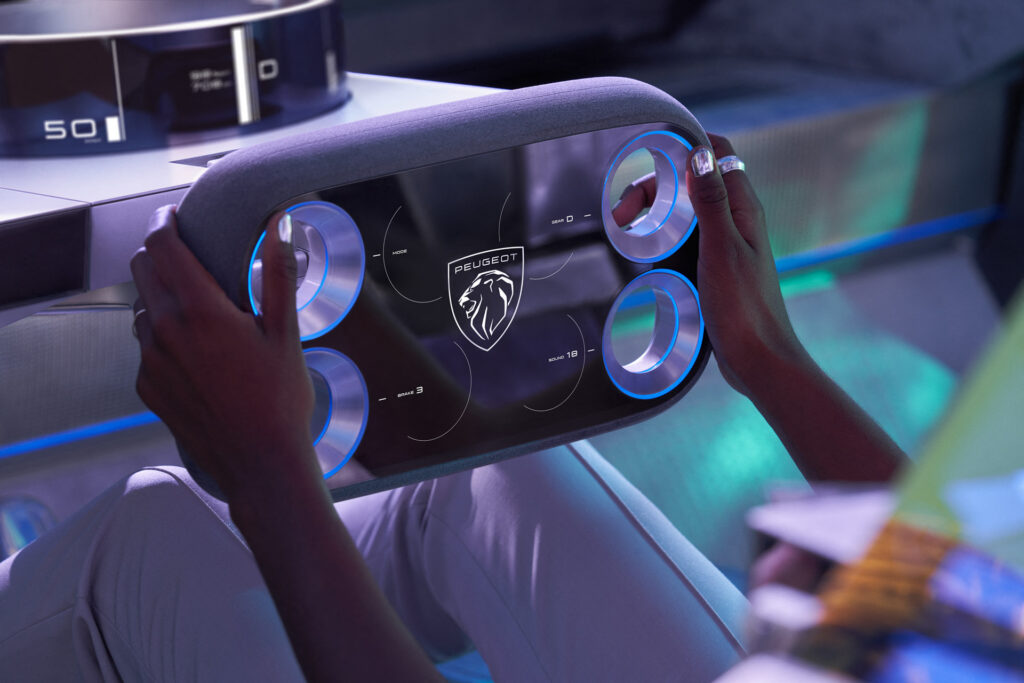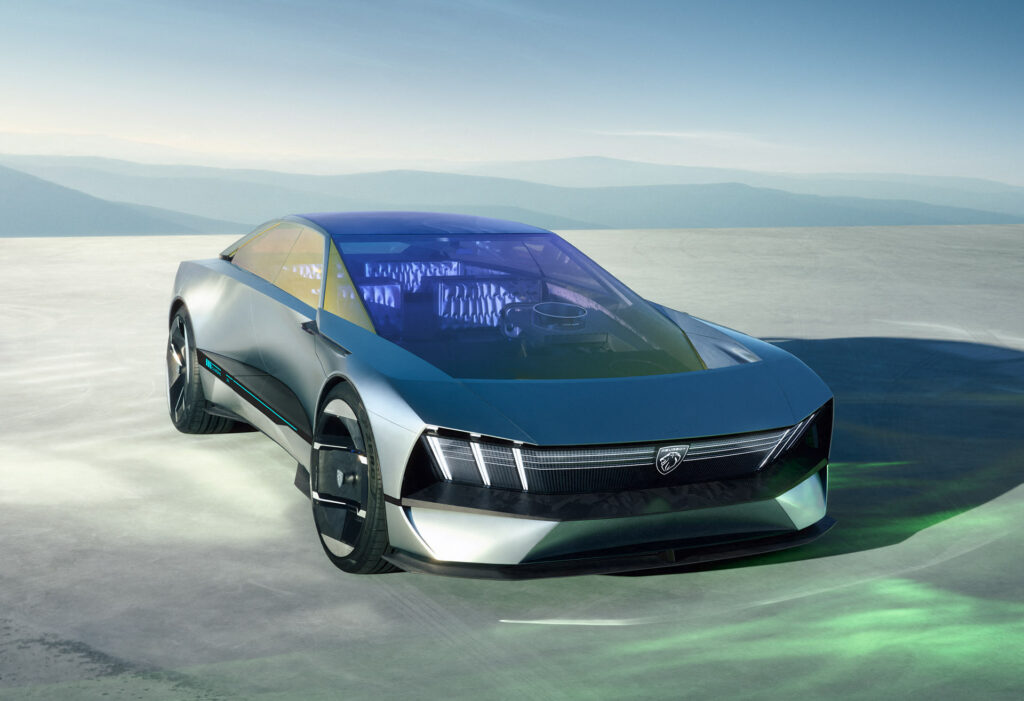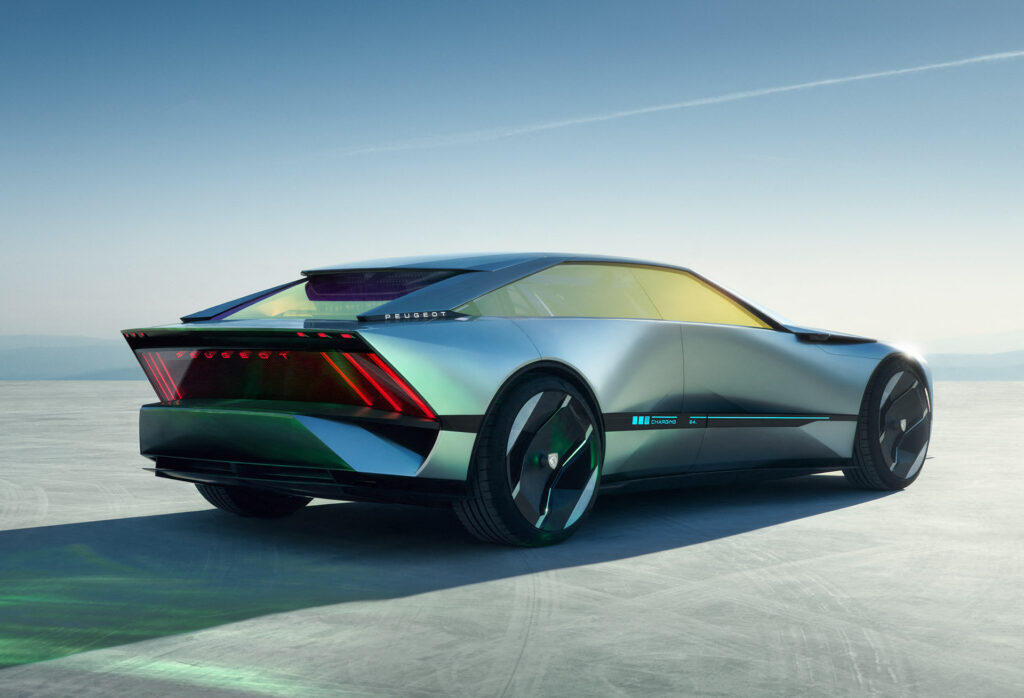Despite abandoning plans to re-launch the brand in North America, Peugeot chose CES in Las Vegas to reveal a concept car that hints how its next generation of electric sedans and SUVs will look starting in 2025.
The Inception takes the form of a futuristic four-seat sedan that rides on the new Stellantis STLA Large EV platform. Visually, there’s a clear connection to the 2018 e-Legend concept, but this time the overt retro references to past Peugeots are mostly stripped away to create something more forward looking.
Not that it’s totally devoid of classic and current Peugeot design cues. The hood line that sweeps up and back over the headlights tips a hat to the brand’s cars of the 1970s and early 1980s, but this time those lights are LEDs and the grille connecting them is a huge glass panel. The wheels are similar to the rims fitted to the new 408 sedan, though now feature horizon-levelling illuminated Lion emblems, and the rear panel – digital, again, like the one at the front – features the same cat’s claw light motif familiar to current Peugeot owners.
Related: Peugeot 605 Presence Is A Chilean Designer’s Render For A Flagship Luxury Electric Sedan
But the most striking exterior element is the huge windshield that plunges down from the roof panel towards the nose and right through the space where the hood would be in a conventional sedan. Riffing on the design of the company’s 1988 Oxia supercar, it cleverly blurs the boundaries between interior and exterior design, putting the focus on the cabin volume when viewed from above, yet when seen in profile, the Inception looks like a typically sporty coupe or sedan.
We’ll have to wait to see if the crazy glazing and the Tech Bar in the door that displays messages to the approaching driver make it to production, but Peugeot is adamant that the concept’s blend of athletic curves, crisper lines and square shoulders that step out beyond the side windows will be present on future cars.
The Inception’s whacky interior features however, are still some way off from being showroom-ready. Conceived as a replacement for Peugeot’s influential i-Cockpit interior, its focal point is the Hypersquare, a rectangular steering wheel inspired by video games controllers that combines a center-mounted tablet and four thumb-operated control rings, and which Peugeot promises will be fitted to a real car by the end of this decade.
The wheel is connected to the front axle via steer-by-wire tech and can fold away into the dashboard when the car’s Level 4 autonomous function is activated, while the instrument panel behind it is an unusual circular screen Peugeot calls the Halo Cluster. And that’s pretty much your lot as far as a dashboard is concerned, though metallic-look velvet upholstery covering seats that adapt to fit the shape of the driver and passengers should mean it still feels welcoming and suitably luxurious.
As for what’s under the skin, well, it’s a concept car, so it’s probably powered by the motor from a leaf blower, but Peugeot says its theoretical bi-motor, all-wheel drive setup can deliver up to 671 hp (680 PS) and send the 197-in (5 m) sedan to 62 mph (100 km/h) in less than 3 seconds. Induction charging removes the need for cables, but hooked up to a suitably fast charger the 800-volt architecture can add 19 miles (30 km) of range in 5 minutes should you exhaust the 500-mile (800 km) range provided by the 100 kWh battery.








